Abstract
The peak procedure was used to study temporal control in pigeons exposed to seven fixed-interval schedules ranging from 7.5 to 480 s. The focus was on behavior in individual intervals. Quantitative properties of temporal control depended on whether the aspect of behavior considered was initial pause duration, the point of maximum acceleration in responding, the point of maximum deceleration, the point at which responding stopped, or several different statistical derivations of a point of maximum responding. Each aspect produced different conclusions about the nature of temporal control, and none conformed to what was known previously about the way ongoing responding was controlled by time under conditions of differential reinforcement. Existing theory does not explain why Weber's law so rarely fit the results or why each type of behavior seemed unique. These data fit with others suggesting that principles of temporal control may depend on the role played by the particular aspect of behavior in particular situations.
Keywords: peak procedure, timing, fixed-interval schedules, key peck, pigeons
Full text
PDF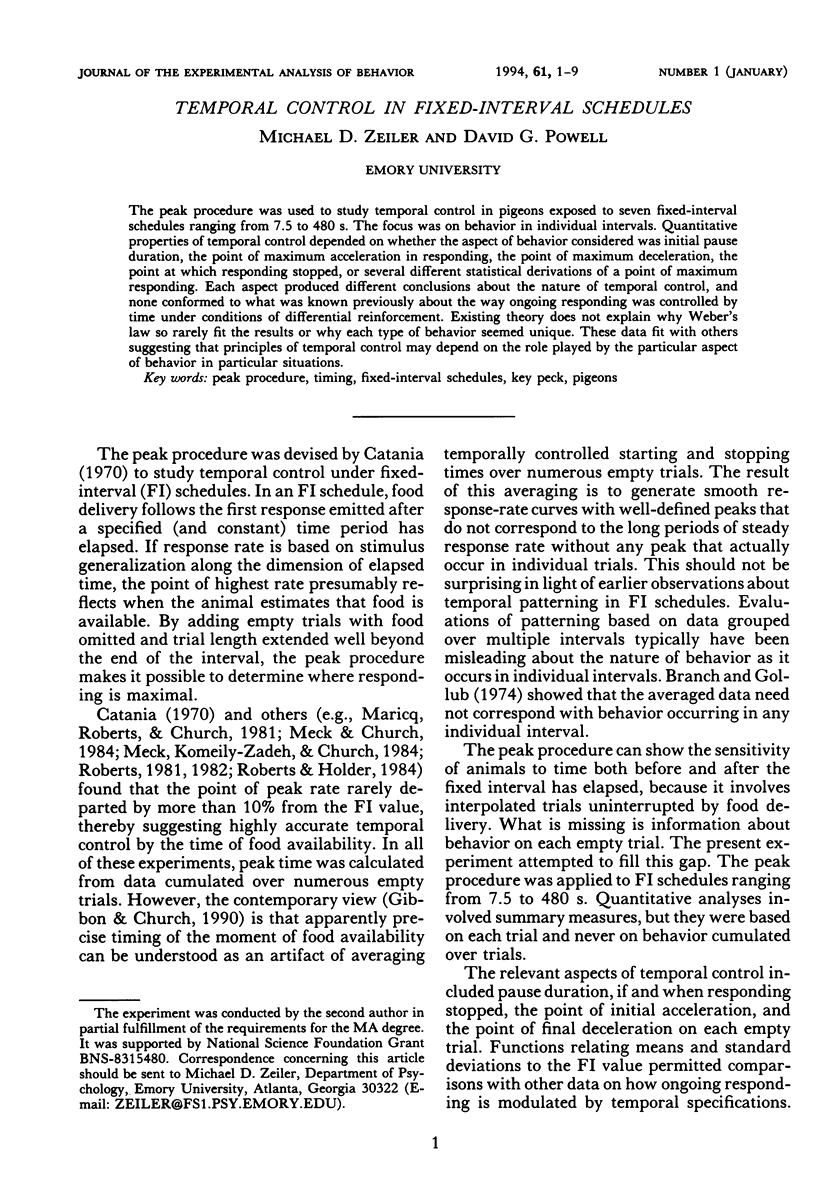
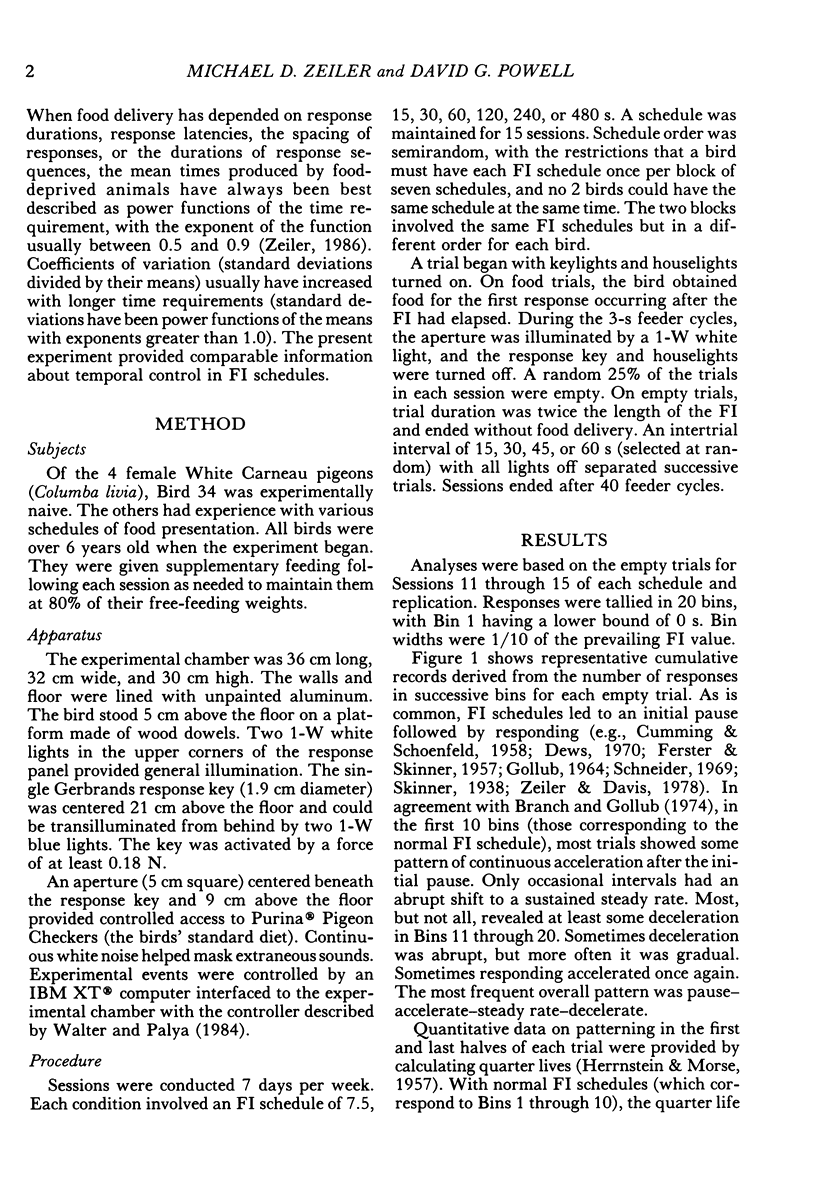
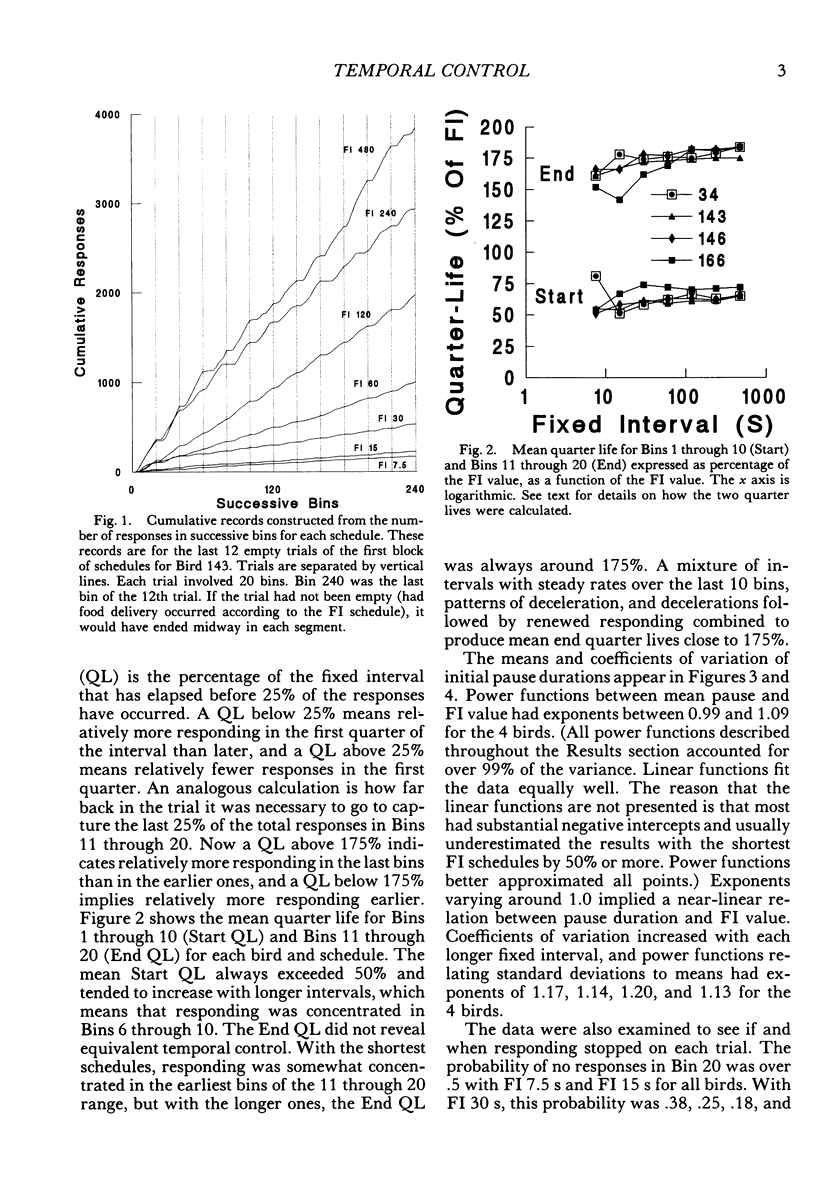
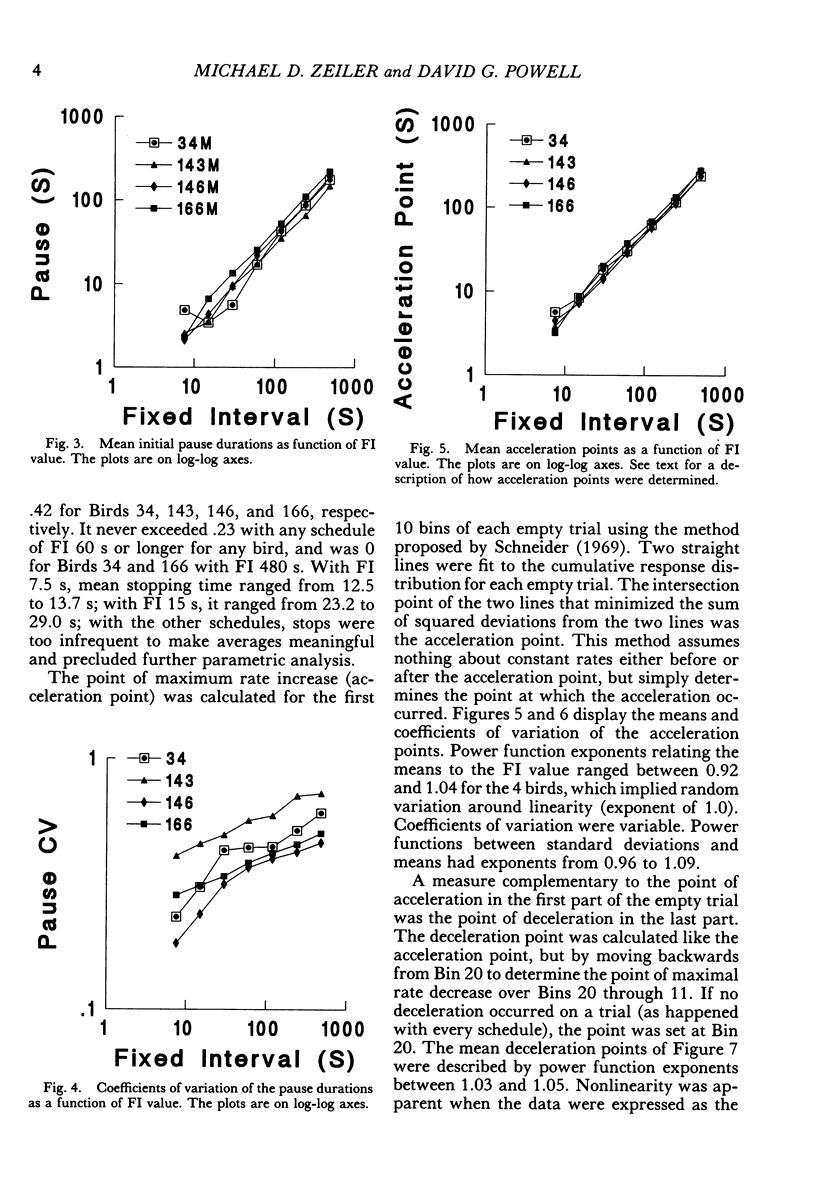
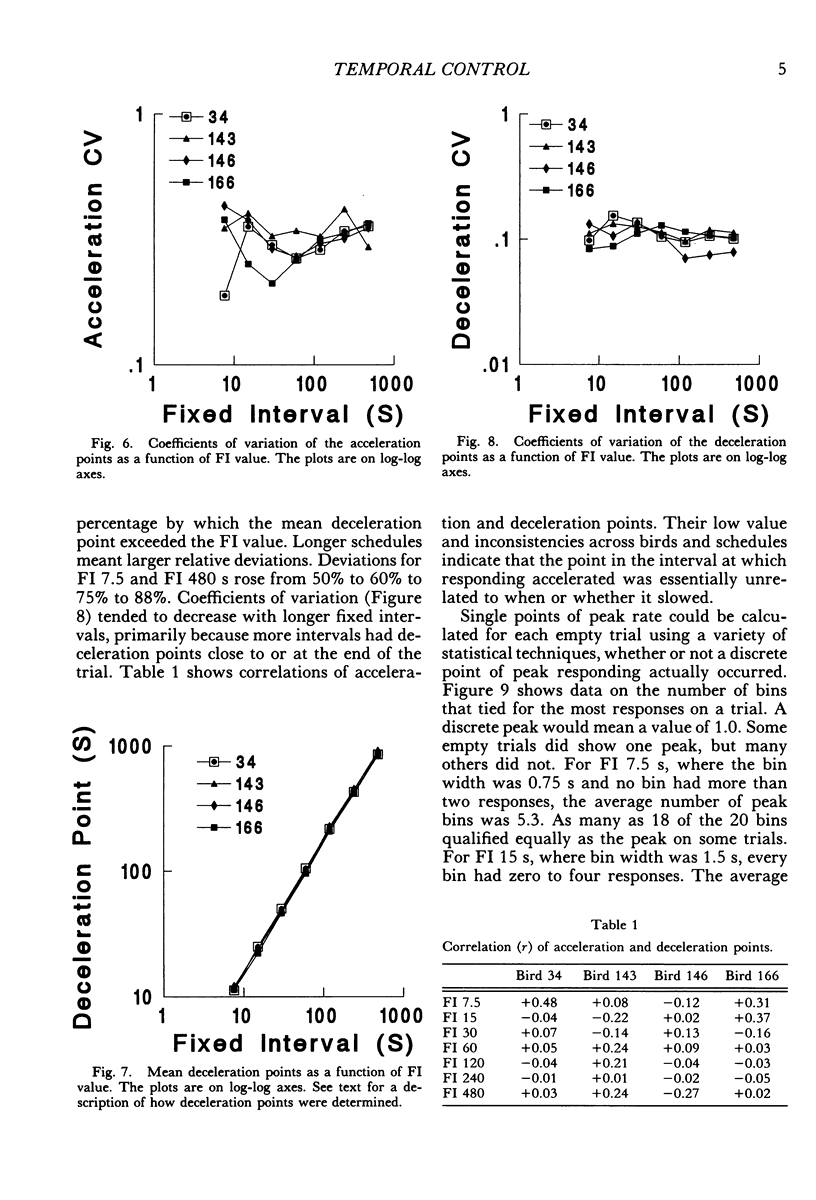
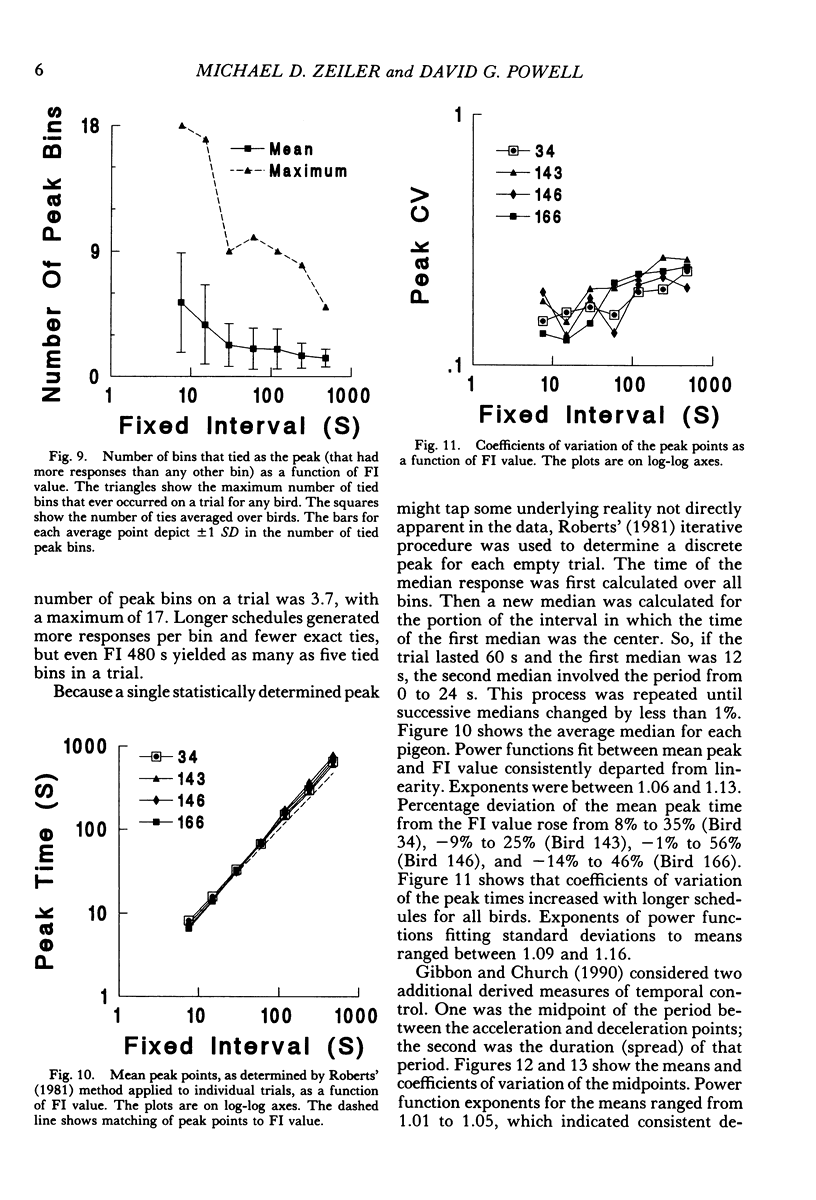
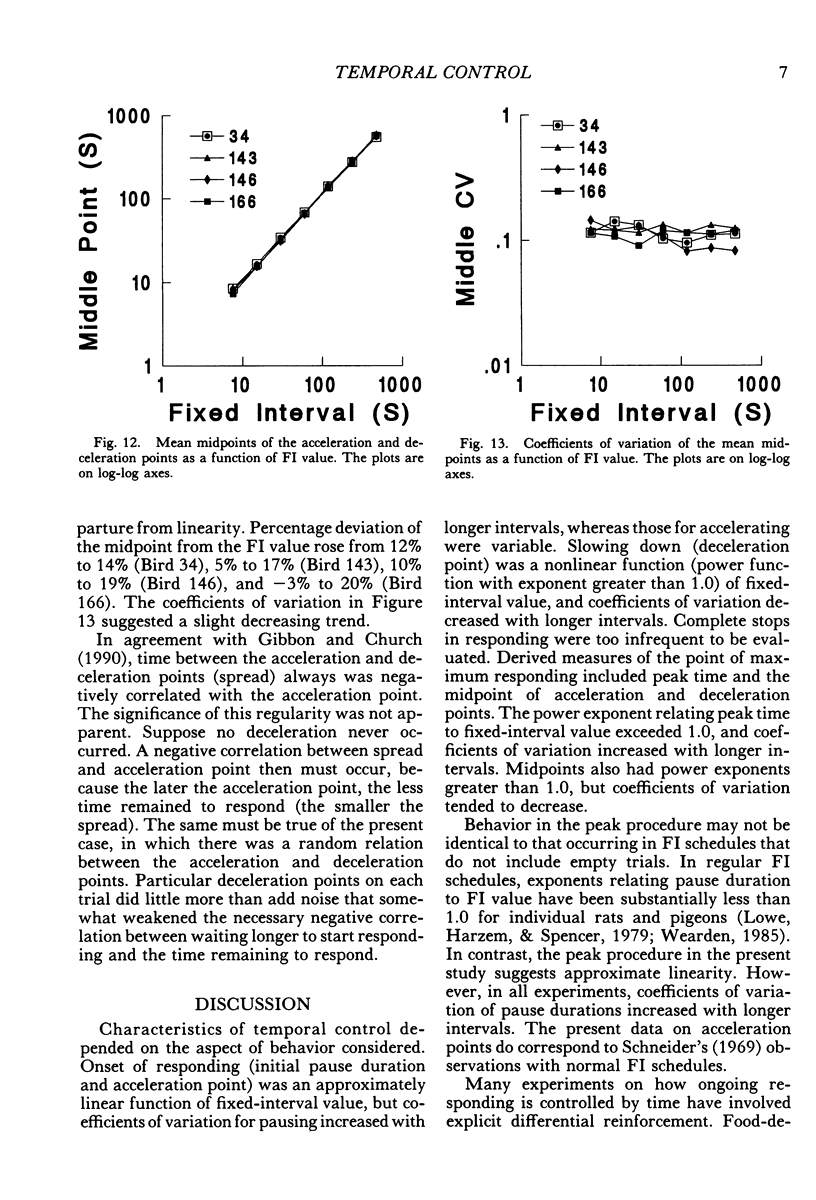
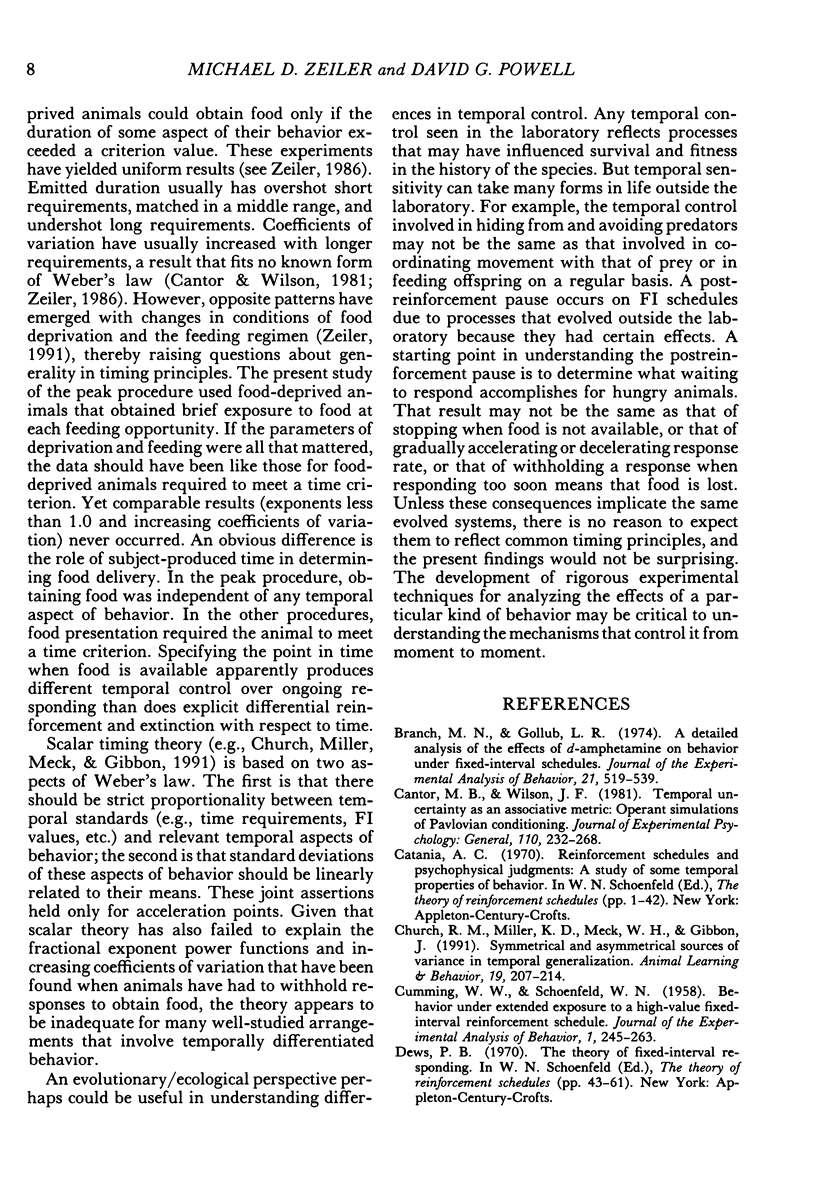
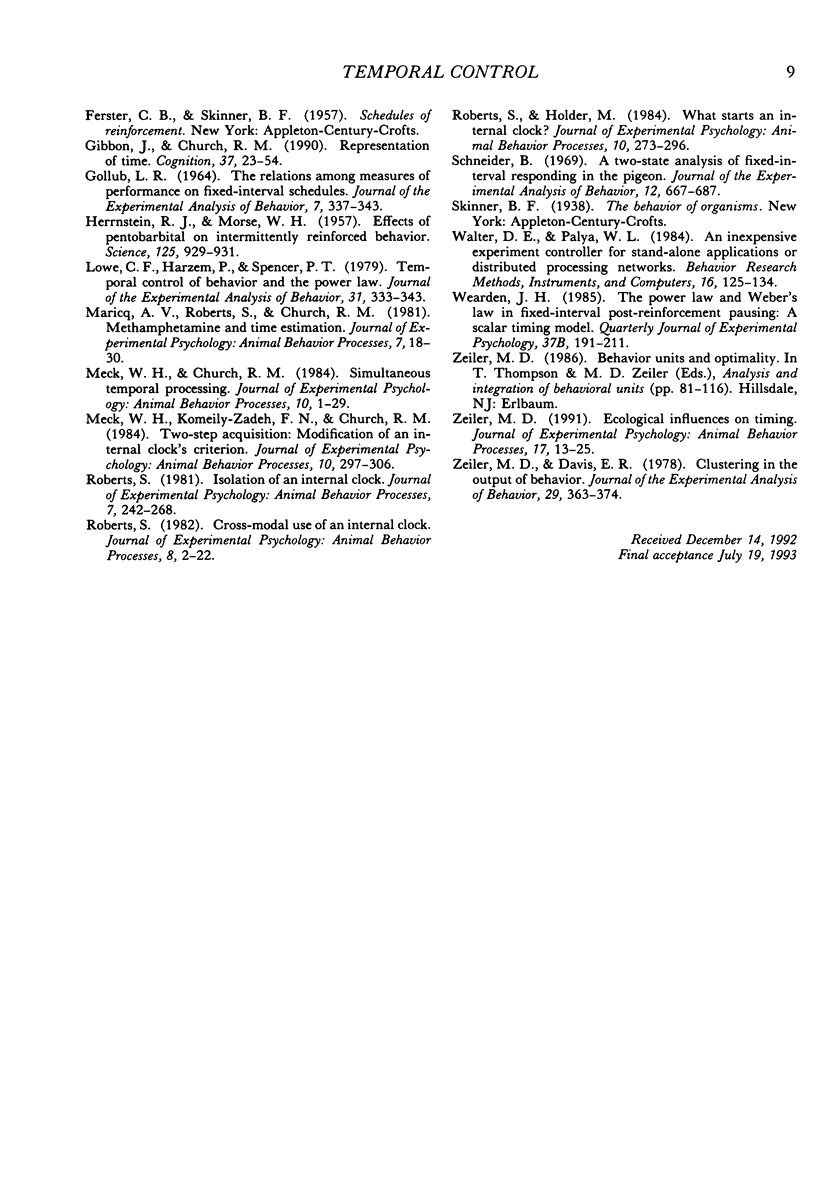
Selected References
These references are in PubMed. This may not be the complete list of references from this article.
- Branch M. N., Gollub L. R. A detailed analysis of the effects of d-amphetamine on behavior under fixed-interval schedules. J Exp Anal Behav. 1974 May;21(3):519–539. doi: 10.1901/jeab.1974.21-519. [DOI] [PMC free article] [PubMed] [Google Scholar]
- Cumming W. W., Schoenfeld W. N. Behavior under extended exposure to a high-value fixed interval reinforcement schedule. J Exp Anal Behav. 1958 Aug;1(3):245–263. doi: 10.1901/jeab.1958.1-245. [DOI] [PMC free article] [PubMed] [Google Scholar]
- GOLLUB L. R. THE RELATIONS AMONG MEASURES OF PERFORMANCE ON FIXED-INTERVAL SCHEDULES. J Exp Anal Behav. 1964 Sep;7:337–343. doi: 10.1901/jeab.1964.7-337. [DOI] [PMC free article] [PubMed] [Google Scholar]
- Gibbon J., Church R. M. Representation of time. Cognition. 1990 Nov;37(1-2):23–54. doi: 10.1016/0010-0277(90)90017-e. [DOI] [PubMed] [Google Scholar]
- HERRNSTEIN R. J., MORSE W. H. Effects of pentobarbital on intermittently reinforced behavior. Science. 1957 May 10;125(3254):929–931. doi: 10.1126/science.125.3254.929-a. [DOI] [PubMed] [Google Scholar]
- Lowe C. F., Harzem P., Spencer P. T. Temporal control of behavior and the power law. J Exp Anal Behav. 1979 May;31(3):333–343. doi: 10.1901/jeab.1979.31-333. [DOI] [PMC free article] [PubMed] [Google Scholar]
- Maricq A. V., Roberts S., Church R. M. Methamphetamine and time estimation. J Exp Psychol Anim Behav Process. 1981 Jan;7(1):18–30. doi: 10.1037//0097-7403.7.1.18. [DOI] [PubMed] [Google Scholar]
- Meck W. H., Church R. M. Simultaneous temporal processing. J Exp Psychol Anim Behav Process. 1984 Jan;10(1):1–29. [PubMed] [Google Scholar]
- Meck W. H., Komeily-Zadeh F. N., Church R. M. Two-step acquisition: modification of an internal clock's criterion. J Exp Psychol Anim Behav Process. 1984 Jul;10(3):297–306. [PubMed] [Google Scholar]
- Zeiler M. D., Davis E. R. Clustering in the output of behavior. J Exp Anal Behav. 1978 May;29(3):363–374. doi: 10.1901/jeab.1978.29-363. [DOI] [PMC free article] [PubMed] [Google Scholar]


